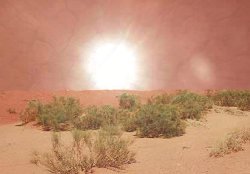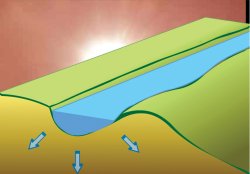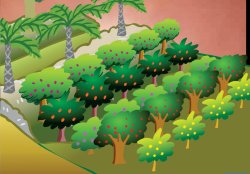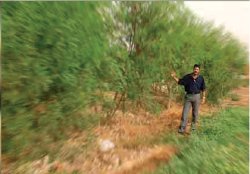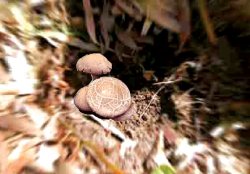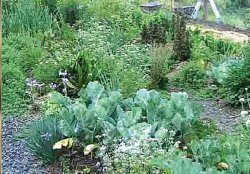| The Golden Age Lifestyle
By Brother Richard Demetrious, Tasmania, Australia (Originally in English) At first glance, it seemed impossible to turn one of the lowest lying, driest and saltiest deserts in the world into useable land. But Australian Geoff Lawton, a permaculture (ecologically sustainable agriculture) consultant, thought otherwise about the dust bowl area located on the border of Jordan and Israel, some 400m (1,300 feet) below sea level and only 2 km (1.25 miles) from the Dead Sea, the saltiest inland lake on earth. This land is among the most inhospitable in the world, with summer temperatures reaching over 50 degrees C (122 degrees F), and no fresh water to be found. Existing agricultural practices at that time included growing plants under plastic and using chemical fertilizers. Mr. Lawton was commissioned for this project in August 2000 by a Japanese aid organization working in association with a Jordanian aid organization. Its goal was to demonstrate sustainable farming practices. Mr. Lawton and his partner Sindhu first designed the project, then began carrying it out by teaching permaculture techniques to the local people. Out of respect for this primarily Muslim culture, Sindhu taught the women and Geoff taught the men. First, they dug a 1.5 km (0.93 mile) trench that utilized existing earth structures by following the contour of a hard underground rock bed. This served to catch the water and stop it from leaching deeper into the ground. They then covered the edges of the trench with mounds of mulch and leftover plant material, which was previously burned as waste material by the farmers in Jordan. At the top of the mulch mounds, they planted special nitrogen-fixing desert trees, and then further down the mounds they planted fruit trees such as date palms, figs trees, pomegranate trees, etc. They also filled the trench itself with mulch and more plant material, and installed a drip irrigation system under the mulch to minimize water evaporation. To the amazement of the local people and other agricultural authorities, a step-by-step transformation began to unfold. Within one year, the fig trees were one meter (three feet) tall and bearing figs, which none of the locals could believe. The other fruit trees were also growing well; the bottom of the trench had sprouted mushrooms in response to the moisture, and the soil itself was teeming with life. Another miracle that happened was that the soil’s salt levels actually dropped, even after using salt-laden water for irrigation. Soil tests revealed that the micro-organisms growing in the rich compost created a waxy material that converted the salt that into an inert substance, so it no longer harmed the plants. The result of this project has been to create a life-sustaining paradise in one of the most arid locations on the planet. This innovative approach shows us that nothing is impossible if we work in cooperation with the life around us, and that miracles can happen to anyone who is prepared to put in a little effort. By walking one step towards Heaven, Heaven will walk 100 steps towards us. Here’s to the Golden Age and many happy times to come for all
humans who set foot on this planet, now and for the ages to come!
References:
| |||||||||||||||||||
